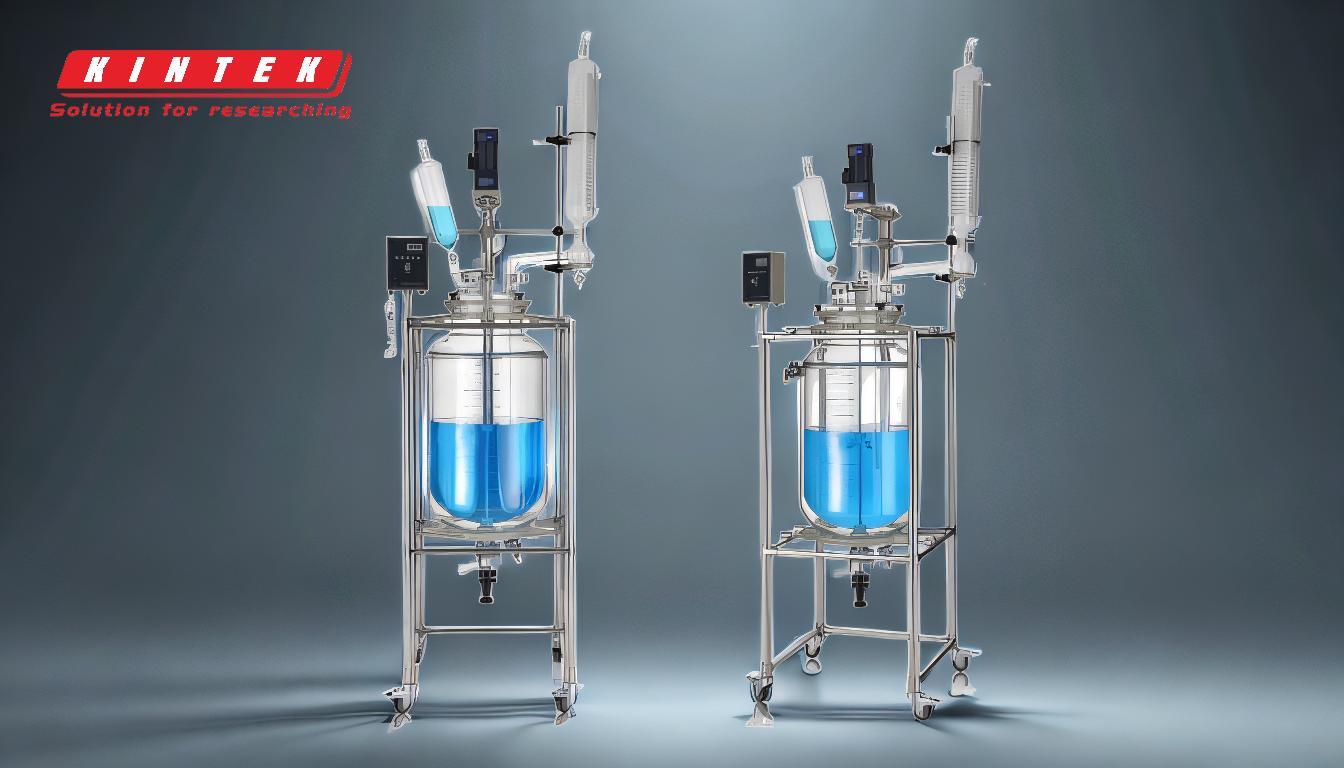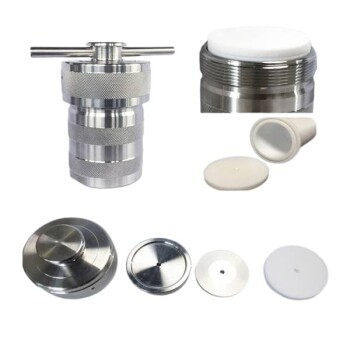A jacketed reactor is a specialized vessel designed for chemical reactions, featuring a double-walled structure that allows precise temperature control. The inner vessel holds the reactants, while the outer jacket circulates a heating or cooling medium (e.g., water, oil, or other fluids) to regulate the reaction temperature. This design ensures uniform heating or cooling, maintains consistent reaction conditions, and prevents heat loss or gain. Jacketed reactors are widely used in laboratories, pilot plants, and industrial settings due to their ability to handle sensitive reactions requiring strict temperature control. Materials like glass, stainless steel, or other metals are chosen based on the application, and additional features like stirring, dosing, and sampling mechanisms enhance their functionality.
Key Points Explained:

-
Double-Walled Structure:
- The jacketed reactor consists of an inner vessel (core) and an outer shell (jacket). The inner vessel holds the chemical reactants, while the jacket surrounds it, creating a space for the circulation of a heating or cooling medium.
- This design allows for precise temperature control, which is critical for many chemical reactions that require specific thermal conditions.
-
Temperature Regulation:
- The jacket is filled with a heating or cooling medium, such as water, oil, or specialized thermal fluids. A pump circulates this medium through the jacket.
- By adjusting the temperature of the circulating medium, the temperature inside the reactor can be precisely controlled. This ensures that the reaction proceeds under optimal thermal conditions, whether it requires heating, cooling, or maintaining a constant temperature.
-
Insulation and Heat Management:
- The jacket not only regulates temperature but also provides insulation. This helps maintain consistent reaction temperatures by minimizing heat loss to the environment or preventing unwanted heat gain.
- This feature is particularly important for reactions that are sensitive to temperature fluctuations or require long-term thermal stability.
-
Materials and Applications:
- Jacketed reactors are constructed from materials like glass, stainless steel, or other metals, depending on the application. Glass reactors are often used in laboratories for their transparency and chemical resistance, while stainless steel reactors are preferred in industrial settings for their durability and strength.
- These reactors are versatile and can be used in various applications, including batch processes (where reactants are added at once) or continuous processes (where reactants are continuously fed and products are continuously withdrawn).
-
Additional Features:
- Stirring Mechanism: An agitator inside the reactor ensures thorough mixing of reactants, which is essential for uniform reactions and efficient heat transfer.
- Dosing and Sampling: These mechanisms allow for the controlled addition of reactants and the collection of samples during the reaction, enabling real-time monitoring and adjustments.
- Evaporation and Reflux Control: Some reactors are equipped with systems to manage evaporation and reflux, which are critical for reactions involving volatile components or requiring specific vapor-liquid equilibria.
-
Operation Under Pressure:
- Jacketed reactors can operate under natural pressure, vacuum (negative pressure), or positive pressure, depending on the requirements of the reaction. This flexibility makes them suitable for a wide range of chemical processes.
-
Ease of Use:
- The design of jacketed reactors often includes features like bottom outlet valves for easy material removal, making them user-friendly and efficient for both laboratory and industrial applications.
-
Uniform Heating or Cooling:
- The circulation of the heating or cooling medium through the jacket ensures that the entire inner vessel is uniformly heated or cooled. This uniformity is crucial for maintaining consistent reaction conditions and achieving high-quality results.
In summary, the principle of a jacketed reactor revolves around its double-walled design, which enables precise temperature control, insulation, and efficient heat management. These features, combined with additional mechanisms like stirring, dosing, and sampling, make jacketed reactors indispensable tools for a wide range of chemical processes.
Summary Table:
| Feature | Description |
|---|---|
| Double-Walled Design | Inner vessel for reactants, outer jacket for heating/cooling medium circulation. |
| Temperature Control | Precise regulation using water, oil, or thermal fluids. |
| Material Options | Glass, stainless steel, or metals for diverse applications. |
| Additional Features | Stirring, dosing, sampling, and pressure operation capabilities. |
| Applications | Labs, pilot plants, and industrial settings for sensitive reactions. |
Ready to optimize your chemical processes? Contact us today to learn more about jacketed reactors!










